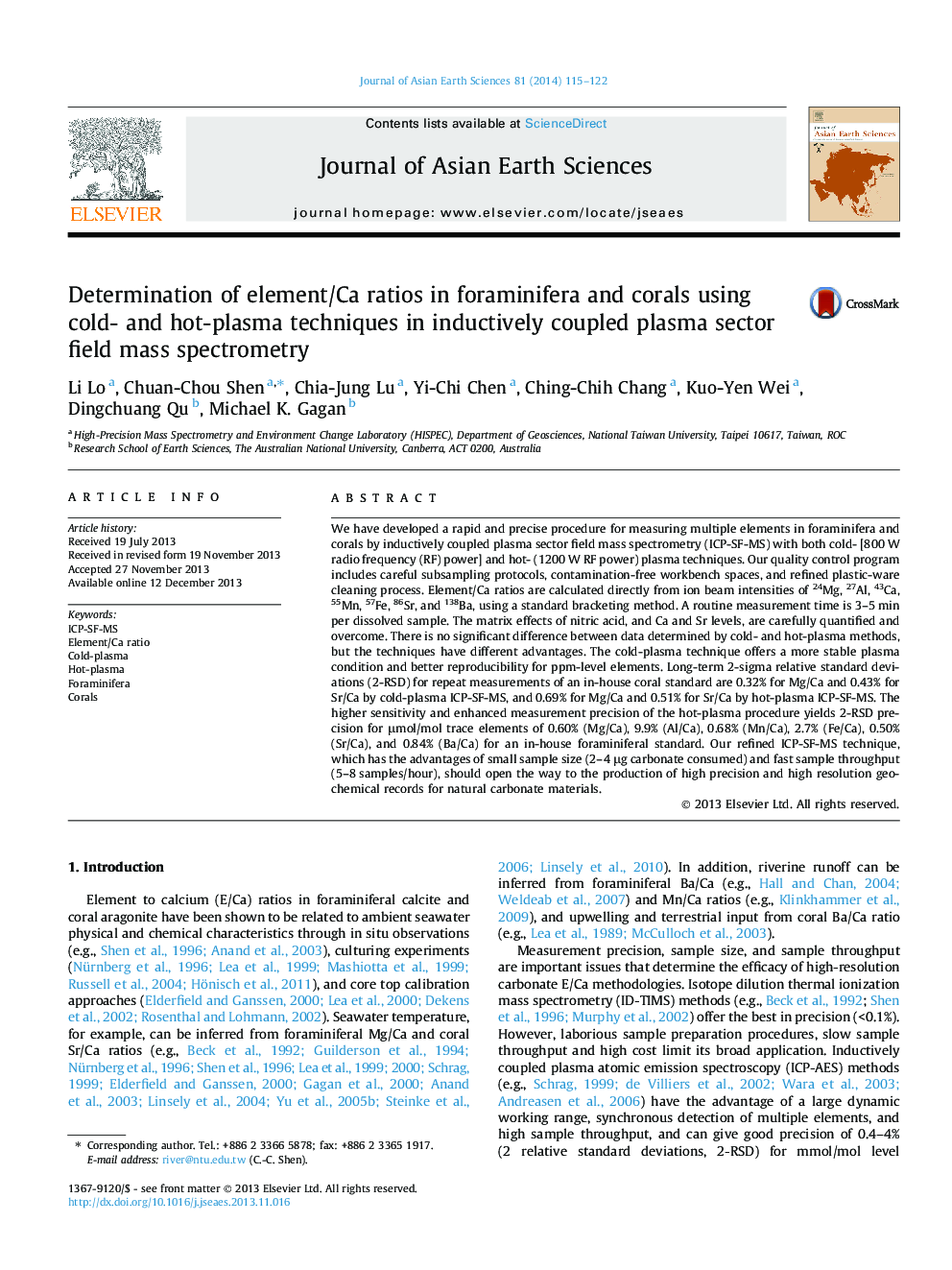| کد مقاله | کد نشریه | سال انتشار | مقاله انگلیسی | نسخه تمام متن |
|---|---|---|---|---|
| 4730821 | 1640387 | 2014 | 8 صفحه PDF | دانلود رایگان |

• A new procedure for measuring element/Ca in foraminifera and corals by ICP-SF-MS.
• Both cold- and hot-plasma techniques with different advantages are proposed.
• Matrix effects of nitric acid, and Ca and Sr levels are carefully clarified and overcome.
• It allows a small sample of 2–4 μg carbonate consumed, and a fast throughput of 5–8 samples/hour.
We have developed a rapid and precise procedure for measuring multiple elements in foraminifera and corals by inductively coupled plasma sector field mass spectrometry (ICP-SF-MS) with both cold- [800 W radio frequency (RF) power] and hot- (1200 W RF power) plasma techniques. Our quality control program includes careful subsampling protocols, contamination-free workbench spaces, and refined plastic-ware cleaning process. Element/Ca ratios are calculated directly from ion beam intensities of 24Mg, 27Al, 43Ca, 55Mn, 57Fe, 86Sr, and 138Ba, using a standard bracketing method. A routine measurement time is 3–5 min per dissolved sample. The matrix effects of nitric acid, and Ca and Sr levels, are carefully quantified and overcome. There is no significant difference between data determined by cold- and hot-plasma methods, but the techniques have different advantages. The cold-plasma technique offers a more stable plasma condition and better reproducibility for ppm-level elements. Long-term 2-sigma relative standard deviations (2-RSD) for repeat measurements of an in-house coral standard are 0.32% for Mg/Ca and 0.43% for Sr/Ca by cold-plasma ICP-SF-MS, and 0.69% for Mg/Ca and 0.51% for Sr/Ca by hot-plasma ICP-SF-MS. The higher sensitivity and enhanced measurement precision of the hot-plasma procedure yields 2-RSD precision for μmol/mol trace elements of 0.60% (Mg/Ca), 9.9% (Al/Ca), 0.68% (Mn/Ca), 2.7% (Fe/Ca), 0.50% (Sr/Ca), and 0.84% (Ba/Ca) for an in-house foraminiferal standard. Our refined ICP-SF-MS technique, which has the advantages of small sample size (2–4 μg carbonate consumed) and fast sample throughput (5–8 samples/hour), should open the way to the production of high precision and high resolution geochemical records for natural carbonate materials.
Journal: Journal of Asian Earth Sciences - Volume 81, 25 February 2014, Pages 115–122